David K. Whittaker is Emeritus Professor of Forensic Dentistry at Cardiff University, Wales. He is the author of a standard text on forensic dentistry in the UK (Colour Atlas of Forensic Dentistry, Wolfe Medical Publications) and the author of more than 100 publications. As a practising expert witness for 30 years, he has written more than 430 reports and statements and regularly appears in Crown, Appeal, Magistrates and Coroner Courts. During the 2007 FDI World Dental Congress in Dubai, Dental Tribune editor Claudia Salwiczek had the opportunity to speak with him about his fascinating work in forensic dentistry.
Claudia Salwiczek: What are the main principles and procedures of identifying a dead person using dental information?
Prof. Whittaker: It is quite complicated to go into all the methods in a short time, but in principle you try to investigate the teeth in detail, eg, take x-rays and photographs and/or make casts. In other words, the goal is to find out as much information as you can from the dead person’s mouth, as to all the types of dentistry they have had done over the years and unusual anatomical features. Most people’s teeth differ slightly, even if no fillings have been put in. There are slight differences of position, of angulation, of size and shape.
When you have a dead body to deal with and you do not know anything about it, you start by collecting all that information. In my opinion, it is best to do that first, even if you already have a set of dental records or a set of x-rays the police has produced from somewhere thinking it could be this person. It is better to ignore all of this information, put it aside, seal it in an envelope and even say to the police “do not give it to me” so you are not trying to fit what you see in the mouth to some dental record. It is the other way around. You are trying to describe what the person’s mouth and face look like. It’s not just the teeth you are looking at. It’s also the shape of the face and lips. Dentists are trained not just to look at teeth but to look at palates, tongues and the mouth in general, the shape of the jaws, the growth, etc. All of this is part of the professional training. So you sit down with a blank pad, as if you were going to write a detective novel. You start with no name and no knowledge whatsoever. And then you start building up little bits of information.
You will look at the body as a whole, if you got a whole body, and firstly determine whether this is male or female. Even if it is decomposing or just a skeleton you can usually determine if it is male or female because of the pelvis, but even from the shape of the skull. For example, most men surprisingly have a forehead that slopes backwards a bit. Most women have one which is vertical. Men’s jaws tend to be much squarer and they tend to flare at the back. Also, the big bones under the ear, called the mastoid that has muscles attached to it, is usually bigger and more marked in male bodies. I can go on, but there a quite a lot of differences. It is usually not very difficult to determine if the body you are looking at is male or female. That way you are not wasting your time looking for the wrong sex.
Then you start to look at the age of the person, when they died. As I said in my lecture, you can do that because the teeth actually start to develop when you are still in the womb—only six weeks after conception. The human foetus is only a centimetre and a half long, but his teeth are beginning to form. By the age of about 2 1/2, all the baby teeth will have erupted into the mouth. Then there is a kind of plateau, nothing seems to be happening, but in fact the permanent teeth, which also already started to develop in the womb, come through when the child is about 6 years old, and they go on erupting through to the age of 18 and they are still growing until the age of 21. These are approximate figures. So from six weeks after conception to 21 years of age you can look at these teeth developing, either under the microscope or on x-rays or by just looking into the mouth. It is a sequential pattern that we know a lot about.
So the real problem is the determination of the age after 21 years of age when everything sort of shuts down. We usually do that by taking one tooth out of the body and slicing it under a machine, usually lengthwise, and we put that under a microscope and measure certain changes of the root of the tooth. The older you get, the root of the tooth becomes transparent, because the mineral that deposits in it makes it transparent, and this transparency starts to develop around the age of 25 and it spreads through the tooth until old age. So we can measure the extent of that and we can work out how old they were when they died.
If we want to have it more accurately than that we can do the determination of the age from the biochemistry of the tooth with the help of the amino acids, the building blocks of life. In the teeth they are all left-handed. That is because of a very complicated transport system for these amino-acids to the teeth. It can only handle left-handed ones, so all our teeth become as if they were left-handed. And then, because nature doesn’t like an imbalance, the amino-acids start to rotate inside your teeth until, if you lived long enough, half of them would be left-handed and half of them would be right-handed and then they would cycle around after. So we take out the tooth of the dead body, remove the amino-acids in the laboratory and analyse for left- and right-handedness.
How long does it take them to turn?
Well, it actually takes hundreds of years, but in fifty years a small percentage of them will have rotated and our method is accurate enough to pick out that percentage. So we can determine how long it as been going on and, therefore, how old the person is. The examination of mummies showed that you can go back in time as long as you want to reconstruct the teeth and to figure out what sex the person had.
Well, it depends to some extent on how the person has been preserved since death. Most of the Egyptian mummies were preserved in different ways depending on which century they are from and, therefore, the methods of mummification were slightly different. We do not know a lot about the effect it has on the teeth, but we think that some of these changes happened in these mummies so we can use them in the same sort of way. We have to be a bit careful about that because we can’t go back and check it scientifically, so we have to make some assumptions. But I think it works quite well.
And in a ‘regular’ case, when a dead person is, let’s say, left on a field?
Then we do know that some changes occur. You can get fungus occasionally penetrating the teeth and that may take many years. But that can change the structure of the teeth. If it is just a matter of months or a few years it is not usually a problem, unless the body has been subjected to very poor conditions of preservation like a very acidic environment. We have to try to find out as much as we can about those changes, which are actually called taphonomy. But this can be quite difficult at times due to social and religious reasons. We can’t dig out bodies to find out what happened to them. People like me see a lot of dead bodies—I mean I’ve seen hundreds and hundreds. Each one of them is somewhat unique and you cannot assure that one change won’t necessarily occur in another and vice versa, so you have to try
to compromise.
What have been the most interesting and challenging criminal cases you have worked on?
It is difficult to say because some of them are very interesting from a social and legal point of view. Some of them are very interesting because the situation is very unusual and some because they are very challenging scientifically and set new problems. So it is almost impossible to pick one. In terms of murder,the biggest one I have worked on was the Frederick and Rosemary West murders in Gloucester in 1994, sometimes also called the Cromwell Street murders. Back then, I had to set up a special laboratory to deal with that because of security reasons and because of the amount of work. I worked more or lessabout for one year most of the day and sometimes most of the night on that case and almost nothing else.
What made it so difficult?
The sheer number of cases and dead bodies. We were dealing with a serial killer and a lot of female
victims. They were all fairly young and we had no idea who they were. You can read about the Cromwell Street murders, there have been at least three books written about it. We thankfully do not have many serial killers in the UK. There were about 10 in the whole of the 20th century and not really one yet in this century.
Do you normally work on criminal cases only, or are cases like the mentioned above also common in your everyday praxis?
I work on both, but the majority of cases are criminal cases like murder and rape and grievous bodily harm (GBH) cases. These are cases were the victim survives, but has been badly injured. Those are the three main types of cases that I work on.
In the UK we have the adversarial system of law. When a person is arrested, the crown prosecutes that person. So they bring in their lawyers and then of course you have the defence lawyers on the other side. And they argue the case in court. About half the cases I do, and I have done about 800 of them, I would be instructed by the Crown. So I am in on the case from the beginning, advising the police and the Crown prosecution service and so on. And then in court, of course, you have the other expert on the defence side. So half the cases I have done have been for the Crown, but the other half for the defence. So I have experiences on both sides, which I think is very important so you don’t get biased.
How do you personally deal with what you see and hear in your job?
Well, this may sound very hard and cruel, but it doesn’t bother me at all. I switch it off. I think people use terms like Chinese walls. It is very important to see it this way because one cannot do the job properly if you get emotionally involved. It sounds terrible, but I view a dead person not as a person really, but rather as an object that I need to do my tests on to find the information that is needed. The most difficult part of crime for me is actually meeting the relatives, because it personalizes it too much. I try to avoid that as much as possible, but in some cases it is necessary.
So I can come home and, I think, switch off completely. Now my psychiatric consultant friends tell me that nobody can actually do that easily and eventually it will sort of get to you. Maybe it already got to me and I am not aware of it [laughs], but this is not to say that I am not sympathetic of course. When you say this, people see you as being sort of hard and unemotional. I am just as emotional about death as anybody else is when it is my family etc, but not when it is a job that I was asked to do.
The rise of ethnic conflicts in the 1990s has resulted in a need for the identification of victims of ethnic cleansing or mass killings. What makes these cases different from the ones you have to face in everyday crime?
Those can be very difficult because you may have no dental records. And even if you did know roughly who the victims were, they may have never had any dentistry because we may be talking about a country where it wasn’t easy to get or they may have been younger people who didn’t need dentistry done, etc. In these cases you have to use a variety of different methods, work together with experts from different fields, like anthropologists, document experts, clothing experts, etc.
So you usually have a team of forensic experts working together on these cases. This is true for the 2004 tsunami victims for example. I managed the antemortem information to help identification of the British victims. There were lots of British Forensic dentists involved on Rotas mainly in Thailand, and I can’t say too much about it because it has not been published. But what I can say is that we were able to identify approximately 95 percent of the British tsunami victims from their teeth, not from DNA or clothing, but from the teeth.
DNA identification methods have become more important in the recent years. Do you think that this will have an impact on the field of forensic dentistry?
It already has. Many people, myself included, actually thought that this would do us out of the job in the long run. DNA identification was discovered in Britain by the geneticist Prof. Jeffreys in the 1980s, and so we are pretty advanced on DNA technology in the UK. We are now able to pick it up from low copy numbers at very, very low levels. And of course the teeth can tell DNA. In my lab we do quite a bit of work on extracting this and looking at it, so actually DNA identification is part of forensic dentistry. Plus, DNA from teeth is pretty good, because it is well protected and not contaminated. And even then, in something like the tsunami, as I mentioned before, the victims were identified through their teeth and not their DNA. As you see, we still rely on forensic dentistry quite a bit.
Is there something a general practitioner/dentist can do to make your work easier?
The keeping of full and accurate dental records including x-rays and study models, and making these available to people like myself is the best help of all.
Thank you very much for taking the time to sit down with me for this interesting interview.



 Austrija / Österreich
Austrija / Österreich
 Bosna i Hercegovina / Босна и Херцеговина
Bosna i Hercegovina / Босна и Херцеговина
 Bugarska / България
Bugarska / България
 Hrvatska / Hrvatska
Hrvatska / Hrvatska
 Češka & Slovačka / Česká republika & Slovensko
Češka & Slovačka / Česká republika & Slovensko
 Francuska / France
Francuska / France
 Nemačka / Deutschland
Nemačka / Deutschland
 Grčka / ΕΛΛΑΔΑ
Grčka / ΕΛΛΑΔΑ
 Мађарска / Hungary
Мађарска / Hungary
 Italija / Italia
Italija / Italia
 Holandija / Nederland
Holandija / Nederland
 Nordijske zemlje / Nordic
Nordijske zemlje / Nordic
 Poljska / Polska
Poljska / Polska
 Portugal / Portugal
Portugal / Portugal
 Rumunija & Moldavija / România & Moldova
Rumunija & Moldavija / România & Moldova
 Slovenija / Slovenija
Slovenija / Slovenija
 Srbija & Crna Gora / Србија и Црна Гора
Srbija & Crna Gora / Србија и Црна Гора
 Španija / España
Španija / España
 Švajcarska / Schweiz
Švajcarska / Schweiz
 Turska / Türkiye
Turska / Türkiye
 Velika Britanija & Irska / UK & Ireland
Velika Britanija & Irska / UK & Ireland
 International / International
International / International
 Brazil / Brasil
Brazil / Brasil
 Kanada / Canada
Kanada / Canada
 Latinska Amerika / Latinoamérica
Latinska Amerika / Latinoamérica
 USA / USA
USA / USA
 Kina / 中国
Kina / 中国
 Indija / भारत गणराज्य
Indija / भारत गणराज्य
 Pakistan / Pākistān
Pakistan / Pākistān
 Vijetnam / Việt Nam
Vijetnam / Việt Nam
 АСЕАН / ASEAN
АСЕАН / ASEAN
 Израел / מְדִינַת יִשְׂרָאֵל
Израел / מְדִינַת יִשְׂרָאֵל
 Алжир, Мароко и Тунис / الجزائر والمغرب وتونس
Алжир, Мароко и Тунис / الجزائر والمغرب وتونس
 Bliski Istok / Middle East
Bliski Istok / Middle East

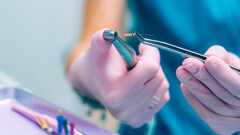
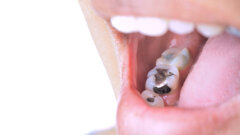











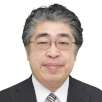


















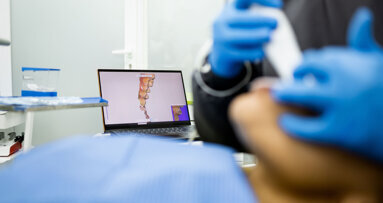
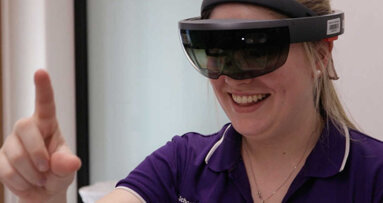

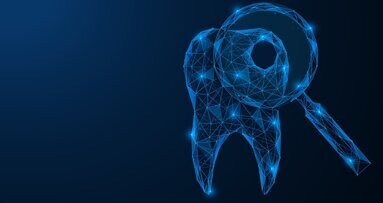



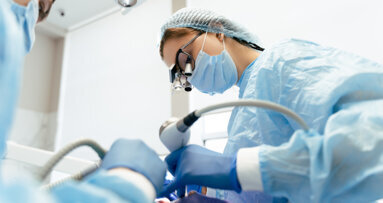















To post a reply please login or register